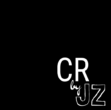A common interviewing technique for behavioural questions that have been tried and tested by prospective applicants in law firm interviews is the STAR method. While adopted by most applicants in any interview, why is it that some students apply this method better than others? In this article, we will delve into the STAR method and how you should apply this method to your next legal interview to obtain the best results.
What is the STAR Method?
STAR stands for Situation, Task, Action and Result/Reflection. This method is an interviewing structure that students would follow when asked a behavioural question along the lines of “tell me a time where you …” or “describe a situation where…”.
We will now go into each element of this method and explore the reason and importance of having each in your response.
Situation and Task: Explain the scenario concisely
This involves providing the context to the scenario or task that you have experienced. This would usually include relevant details such as the nature of the project, your specific role in this situation, and any specific challenges you faced which required you to take action.
The main point here is that the situation should be very brief, perhaps one or two sentences that succinctly cover the issue that you faced, either alone or in a group setting. A major pitfall is that most students begin including a lot of unnecessary detail that does not really add value to the overall picture. Regardless of how novel the situation is, the recruiter is usually not too interested in the scenario or situation. So be careful to avoid adding unnecessary detail here.
The next step is explaining your main task or objective in resolving this situation or issue. The reason why this is useful is because it gives the recruiter an understanding of your role and gives context to the Actions you take as a result. This section should also be very short and be no longer than one sentence.

Action: Set out each step taken in detail
This is perhaps one of the most important sections of your response and involves meticulously detailing the specific actions and steps that you took to address the situation in your role. This should highlight your decision-making process, problem-solving skills, and any initiatives you undertook in response to the issue.
One common mistake that students often make when stepping out each action that they take, is that they are not explicit enough about it. Be very clear about absolutely every single step that was taken. Did you consult with other members in the team? Did you brainstorm ideas to solve the issue? Did you speak directly with the person / directly address the issue through conversation and discussion? Step it all out in your response and make sure that the actions demonstrate your enthusiasm, proactiveness and organised mindset.
More often than not, students underestimate the level of specificity required here in order to clearly communicate the actions taken. So be conscious about really expanding and explaining each step of the process. As a rule of thumb, we would recommend that you have at least 2 to 4 dot points about the particular actions you took in order to resolve this issue.

Results and Reflect: reflect on your Results in detail
The final series of steps is outlining the outcomes of your actions and reflecting on the skills you can therefore bring to the role as a result of this experience. While the outcomes should be short and concise (with references to metrics where possible), the reflection is probably the more important section of your response.
The reflection element involves identifying, to the recruiter, the core skills that you have developed from that particular situation. By listing these skills and understanding that these actions are what lead to the outcome, it shows the recruiter that you truly understand what is required from you and what it takes to resolve the situation or issue, should it arise in the context of being a lawyer and working at a law firm. We recommend that you take your time through this section of the response, and dedicate at least a few sentences to reflect on your results and point out the skills that you developed from the particular scenario.
By mastering the STAR method, you can transform your interview responses into captivating narratives that showcase your capabilities and leave a lasting impression on the recruiter. Remember, the key lies in providing clear context, highlighting specific actions, and emphasising the skills that led you to have a positive impact on the situation.

